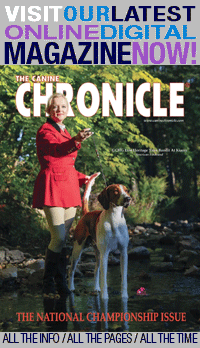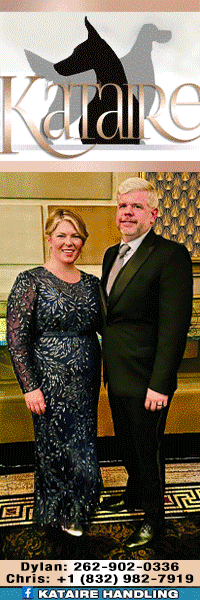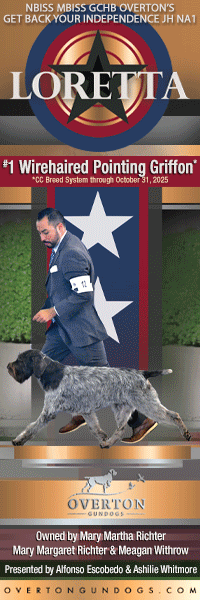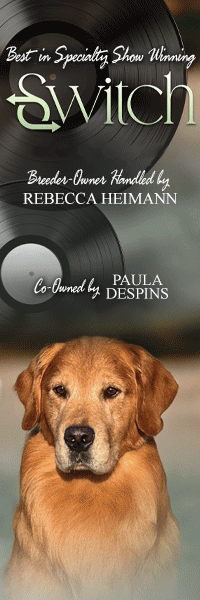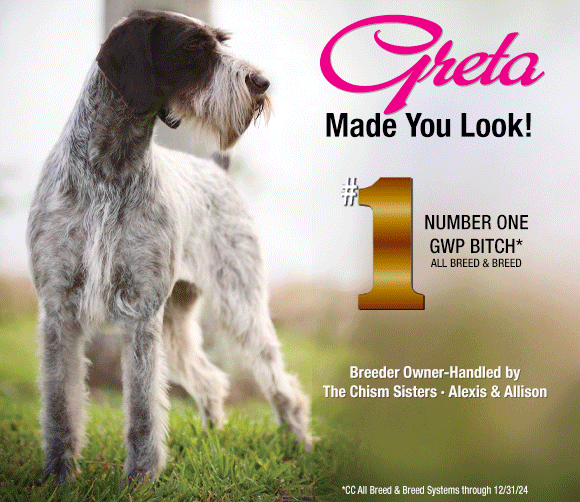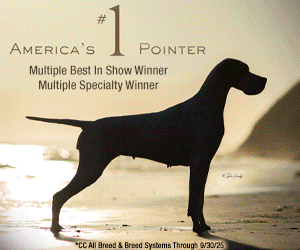The Mentor, the Pupil and the Dog of a Lifetime
By Amy Fernandez
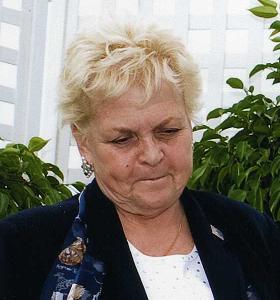 There are a lot of theories and methods out there purporting to “educate” members of our sport because that alarming learning gap spans the entire bandwidth from novice to judge. However, we always seem to come back to the age-old concept of mentoring. That’s how dog knowledge was shared through generations long before kennel clubs introduced any sort of formal infrastructure to teach this business.
There are a lot of theories and methods out there purporting to “educate” members of our sport because that alarming learning gap spans the entire bandwidth from novice to judge. However, we always seem to come back to the age-old concept of mentoring. That’s how dog knowledge was shared through generations long before kennel clubs introduced any sort of formal infrastructure to teach this business.
The thing is, mentoring works as often as it doesn’t. The unspoken problem is the quality of mentoring. Some mentors are simply useless. The majority are competent and willing to share their personal expertise. And then there are a few mentors that truly qualify as legends. They possess a breadth of knowledge that has been earned in the trenches.
In terms of imparting invaluable nuts and bolts dog info, it’s hard to think of a mentor to rival Raymond Oppenheimer. Today, he is best remembered for his succinct definition of best practice, entitled Twenty Basic Breeding Principles. It’s fair to say that every breed club newsletter on the planet has, at some point, reprinted these brief, comprehensive bullet points of how to do it right.
Oppenheimer judged over here quite a bit; and showing to him was justly considered a rare opportunity for any exhibitor to learn from the best. Now, having him as an actual mentor…well, that puts you in an entirely different class. So, it’s time to hear some real-life testimony on that coveted experience. And it’s a great story.
Here on the East Coast, Pat Cruz ranks as a local celebrity. She’s been a breeder, a handler, a judge and an AKC board member. More than any of that, she’s right here. As she puts it, “With me, what you see is what you get.” If you’ve met her, you know that. Candid and approachable, Pat knows dogs for sure. And that gets us to the world’s best mentoring story.
In her early days in the sport, Pat was the classic obsessed novice. If it was a dog thing, she wanted to be there. I better let her tell the story. “I joined the Stewards Club of America and friends of mine, Carl and Ingrid Ackerman, ran the original Knickerbocker Bull Terrier Club on Long Island. I was a member, and I showed a couple of their dogs. In 1970, the Bull Terrier Club of Connecticut was hosting the national specialty in conjunction with Westchester, and they needed a steward for the judge they had coming over from England. I said, ‘no problem’.”
You can guess the name of that imported British specialist. “He drew an entry of over 90 Bull Terriers, and we had a ball. In fact, we had so much fun he invited me to his after-show party at the Westchester Country Club.” He also invited her for a two-week trip to visit his kennel and attend Crufts.
“Cut to the chase. I go. It’s February 1971, the weekend before Westminster.” Back then, Crufts was held in London–it didn’t move to the fabulous NEC until 1991. “It was a full, paid, two-week vacation. I spent a week as a guest of Oppenheimer and Eva Weatherill.” Eva came from an equally formidable background in the sport, way before Ormandy-Souperlative became synonymous with Bull Terrier quality. “They let me go over every Bull Terrier in his kennel. I had my hands on Bar Sinister.”
Okay, from the educational perspective, it is hard to create a more durable learning experience. Right there, with a world-renowned authority, handling each dog while he shared his insights. And those must have been priceless gems because, like Pat, Raymond Oppenheimer was direct and honest, which possibly explains their immediate friendship.
Pat takes up the story. “So, listen to this part. We go to the show and Oppenheimer says, ‘Okay, I think you’re ready. When you see something in the ring that you like, just nudge me. Don’t let anyone else know. Raymond is telling me this as we walk into Crufts,” and she immediately understood the need for subtlety. “It was like Moses parting the waters, everyone was looking. We get to the ringside and there were special VIP seats reserved for Eva, me, him, and the chauffeur.”
We need a bit more back story here. When word got out that Pat was going to Crufts, she received an interesting offer from another Bull Terrier client. “They gave me a bank draft for $5000 and told me to bring back a Bull Terrier for them. Just pick out whatever I like. So, I had this bank draft in my purse.” Pat and the others sit down in their VIP seats and, “The dogs start going around the ring.”
She recalls, “We’re watching and, finally, I give Raymond a shot in the ribs when one dog comes around. He says, ‘Okay, something caught your eye. That’s the dog.’ We say no more about it. I marked my catalog, which I still have, and that dog won the Breed. Afterwards, Raymond arranged for me to meet the owner. Remember, I’m still running around with the bank draft. The owner was lovely. I took the dog down and back, took out a toy and played with him and went over him.” Yeah, he was that good–structurally and temperamentally. “Then I explained to the owner that I represented a buyer in the US. I guaranteed that the dog would never be kept in a kennel. It would be a house dog and only go to shows with me. I asked if they were interested in selling him.
“Here’s the kicker, she said, ‘Oh, I am so sorry, Raymond just bought him.’” At the risk of censorship, I won’t write what you are probably thinking. “We go back to his kennel and Oppenheimer said, ‘You know why I bought him?’ I said, ‘Yes, you don’t want the best to leave this country,’ and that was a problem at that time.”
Thanks to a blizzard, Pat also got an impromptu overnight vacation in Bermuda. This story has so many good parts, but I cannot leave out this bit. That awesome Bull Terrier at Crufts was Abraxas Audacity. He went Reserve BIS that year and returned to win Crufts 1972. America’s loss for sure, but hey, Pat can pick a good one.
Pat has a million great stories and The Canine Chronicle will be running more of them in upcoming issues.
Short URL: http://caninechronicle.com/?p=319143
Comments are closed
